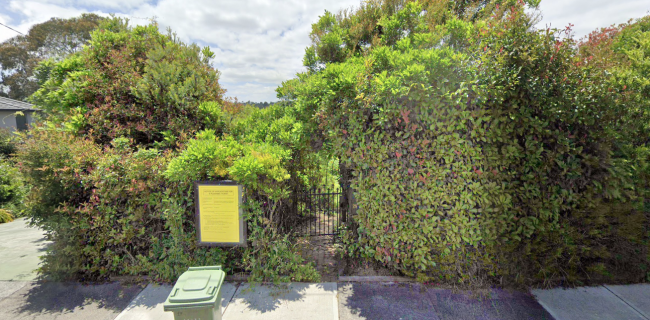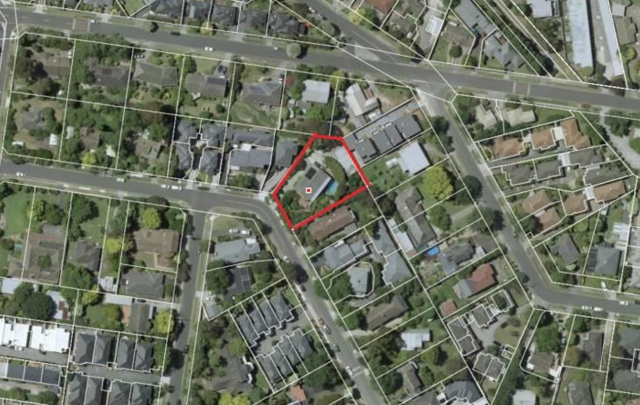
By Mikayla van Loon
Approval to build six townhouses in Mooroolbark has been granted for a second time after a VCAT appeal asked Yarra Ranges Council to reconsider the permit conditions.
The application for 28 Central Avenue Mooroolbark first appeared at a council meeting on 13 October 2020 with an original proposal of seven dwellings to be built on the 1,368 square metre site.
The council instead approved the permit for six dwellings and a variation of an easement but this was taken to VCAT by objectors, led by Gage Rossiter.
As a resident of Central Avenue, Mr Rossiter raised concerns about the setback of the property, asbestos management and building safety, also noted by the 25 objections to the development.
Speaking in objection at the 27 June meeting, Mr Rossiter raised these concerns again and urged the council to take action.
“Number 28 is described by the applicants and by the planning reporter as a weatherboard house,” Mr Rossieter said.
“It’s not a weatherboard house, it is an asbestos house. The external walls are asbestos, the internal walls are asbestos and the roof is asbestos.”
Under the construction management plan, Mr Rossiter said he would like to see a dedicated point to address the management of asbestos.
Within the officer response to objector concerns, it states “Issues relating to the removal of asbestos from sites is covered by legislation outside the Planning and Environment Act 1987 and is not a relevant planning matter. Building Permit will manage safe disposal of asbestos.”
Mr Rossiter said however, the 1987 Act does include the statement, “to secure a pleasant, efficient and safe working, living and recreational environment for all Victorians and visitors to Victoria.”
“The applicants and the planning reporter have stated that safety is a building permit concern not a planning permit concern,” he said.
“I sought some advice from a lawyer with specialist accreditation for the receipt of Victoria and environmental planning law who disagreed.”
Planning and sustainable futures director Kath McClusky said asbestos removal falls within the Building Act 1993 and therefore, is not required to be noted in the construction management plan.
“The removal [of asbestos at] the demolition of the house will be picked up by the relevant building surveyor when they’re issuing that building permit,” she said.
Given Central Avenue falls into a General Residential Zone and sits within a major activity centre, subdivisions and growth of this kind are recommended under the Yarra Ranges planning scheme.
Somewhat of a precedent along Central Avenue has been set, allowing developments to occur outside of the standard setback.
In this application, a setback of seven metres has been provided but Mr Rossiter said it is a standard practice for nine metres to be allowed.
“It’s a concern of Central Avenue precincts that the setbacks are getting smaller and smaller,” Mr Rossiter said.
“This is also about the amenity of the neighbourhoods, which is a pleasant place to live and walk and see and it seems that with the reduced setbacks, it becomes almost like a slight canyon, like the walls are coming in towards us.”
Ms McClusky responded to these concerns and said there is room within the planning scheme to amend the standard setback criteria.
“There is provision within the scheme to vary that and the officers have come to their considered opinion by looking at the different setbacks that are located within that area and they’ve arrived on the fact that they believe the proposed setback is appropriate,” she said.
Moving to approve the permit application, Councillor Sophie Todorov said the development fits the council’s vision of providing a range of housing options within close proximity to public transport and other amenities.
“We’re looking at housing strategy and how we can provide more and more housing, particularly during this time of potential crisis and having a shortage as well,” she said.
“So I feel that this planning application certainly addresses that vision that we have.”
Cr Todorov said the new permit addresses concerns raised during the VCAT process, now providing better garden areas and canopy trees, as well as revised traffic flow and management within the site.
Based on the increased traffic and parking, Cr Len Cox could not support the motion to approve the development.
Despite this the council voted unanimously to grant a permit to the applicant.
“It’s an appropriate design response to that general area and in this type of multi-unit developments that we’ve seen, so I’m quite happy to support the motion tonight,” Cr Todorov said.








